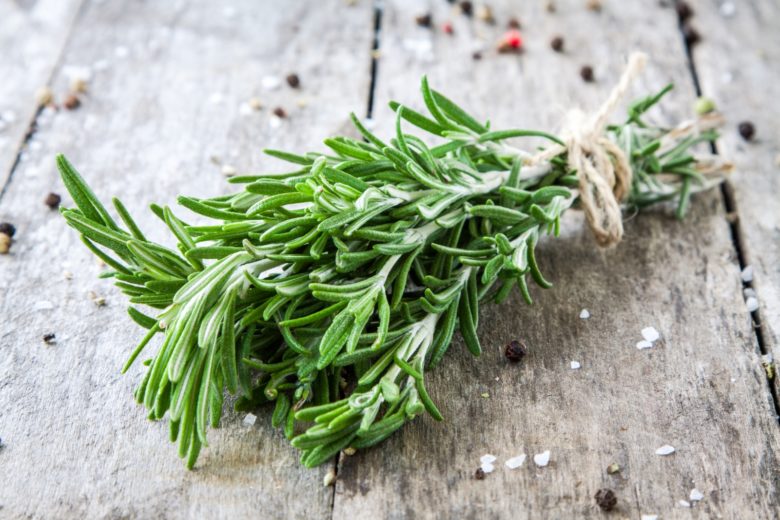
The diverse, culinary herb rosemary is a popular, year-round ingredient that adds a pleasing fragrance to its environment and a savory flavor when used in cooking.
Rosmarinus officinalis is an aromatic evergreen shrub and a member of the mint family (Lamiaceae). The genus name, Rosmarinus, is derived from the Latin word meaning “dew of the sea,” which is fitting due to its light blue flowers and preference for coastal areas. Rosemary is native to the Mediterranean region, but also grows well in many regions of the United States.
Traditionally, this herb has been used in Mediterranean cooking for both flavor and food preservation. Most traditional food in any culture has an inherent wisdom about it that goes beyond flavor toward health. Today we know that the phytochemical found in rosemary, rosmarinic acid, has several interesting biological properties such as acting as an antibacterial, anti-inflammatory and antioxidant. Multiple studies have shown rosemary can inhibit food-borne pathogens such as Listeria monocytogenes, B. cereus and S. aureus.
In addition, rosemary has been the subject of some considerable research due to its antioxidant and anti-inflammatory potential. People usually think antioxidants come from foods such as fruits, vegetables, whole grains, legumes and dark chocolate, but many herbs are also highly concentrated in antioxidants, and a little bit goes a long way. The American Institute for Cancer Research notes that herbs should be used as flavor enhancers because of their health-protective nutrients.
Here are a few ways I like to incorporate this nutrient-packed, flavorful herb: .png)
- Add chopped, fresh rosemary to omelets and frittatas.
- Put a 3 to 5-inch sprig of rosemary in a pot of soup. Remove before serving.
- Create flavored water by adding a 2-inch sprig of rosemary to lemon water (my absolute favorite!).
- When making fresh hummus add a couple tablespoons of fresh rosemary to the food processor.
- Add fresh, chopped rosemary to salad dressings or marinades.
- When roasting root vegetables, add a few sprigs on top and bake.
When selecting fresh rosemary, choose dark green leaves that are free of yellow or dark spots. Wash the herb well, pat dry and store in the refrigerator in a slightly damp cloth.
You can also grow this delightful herb yourself. I have a hearty rosemary bush growing in my back yard. Living a few blocks from the Atlantic Ocean, my rosemary thrives. I clip sprigs to brighten either a bouquet or to enhance a dish. This addition not only heightens mouthwatering flavor, but also enriches the food with more nutrition.





